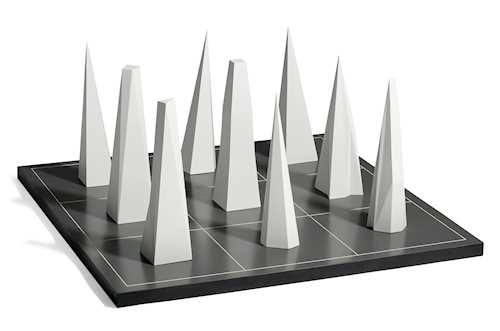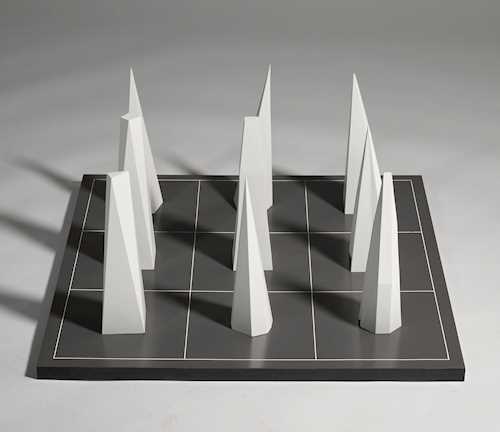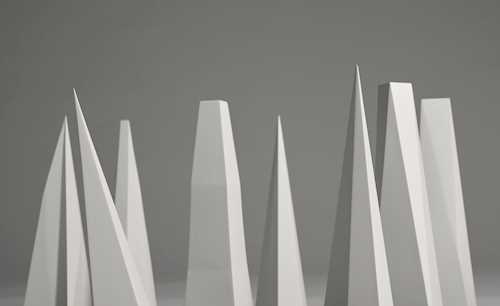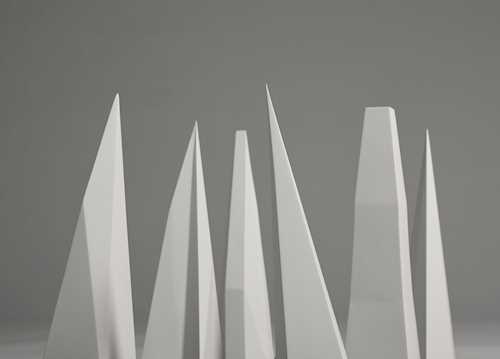
拍品 3477 - A201 战后和当代 - Donnerstag, 30. Juni 2022, 05.00 PM
SOL LEWITT
(Heartford 1928–2007 New York City)
9 Pyramids on a 9 Part Grid. 1991.
Cast polyester resin on formica base.
Signed and numbered on the underside: S. Lewitt 4/15.
34 × 73.7 × 73.7 cm.
Provenance:
- Rosa Esman Gallery, New York, publisher (on the underside with the label).
- Glen Dranoff Fine Art, New York.
- Purchased from the above by the present owner, since then private collectors Switzerland.
Literature: Garrels, Gary (Ed.): Sol Lewitt. a retrospective, San Francisco Museum of Modern Art 2000, p. 273, no. 257 (with colour ill.).
“Anyone who understands the work of art owns it.” – Sol LeWitt
The American artist Sol LeWitt. born 1928 as the child of Russian-Jewish immigrants, was one of the leading figures of Minimalism and a pioneer of Conceptual Art. He gained notoriety in the late 1960s with his Wall Drawings; however, he was active across a variety of media, as his extensive two- and three-dimensional oeuvre illustrates. LeWitt's multi-faceted oeuvre of hundreds of works on paper, prints, photographs, installations, as well as structures in the form of towers, pyramids and other geometric processes is clearly reflected in the works presented here.
LeWitt's artistic practice was based on emphasising ideas over the material aspects of a work of art. In doing so, he used simple, basic geometric forms and their repetition to develop aesthetic systems that reflect a sophisticated engagement with a world beyond the perceptible. Initially known for his geometric sculptures that use open, modular structures and spring from the form of the cube, in 1968 LeWitt began developing his Wall Drawings, in which he explored countless variations on the way drawn lines are applied to walls. Of his Wall Drawings, more than 1200 works were created; first with graphite, then with chalk and later with India ink.
The present sculpture from 1991 epitomises Lewitt's preference for simple geometric forms, as well as their serialisation, repetition, and progression. On a dark grey Formica plinth stand 9 irregular pyramids. The artist has arranged the forms, cast in polyester resin, with precision on the 3 x 3 grid: however, the shapes of the individual structures conflict with the order and continuity of the platform. Thus, along the outer fields, 6 sharply pointed pyramids, almost like icebergs, protrude partially at an angle from the black surface. The three remaining pyramids appear monumental and more stable. The structures convey to the viewer a simultaneous impression of strength and fragility. It is possible that LeWitt deliberately avoided using colours here, for the interplay of the opposites of black and white, as well as angular and pointed, conspicuously emphasises his principle of geometry and repetition.
CHF 20 000 / 30 000 | (€ 20 620 / 30 930)





